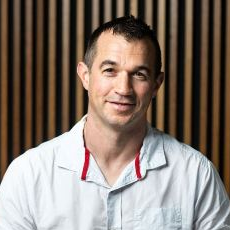Wave, Tidal and Offshore Wind Energy Site Assessment and Monitoring
A special issue of Journal of Marine Science and Engineering (ISSN 2077-1312). This special issue belongs to the section "Ocean Engineering".
Deadline for manuscript submissions: closed (5 March 2023) | Viewed by 10305
Special Issue Editor
Interests: tidal and wave energy; renewable energy site characterisation; coastal and environmental engineering; sediment transport; blue economy
Special Issues, Collections and Topics in MDPI journals
Special Issue Information
Marine Renewable Energy (MRE) plays an increasingly important role in future sustainable energy production. In particular, wave and tidal energy technology is still not fully commercialised compared to offshore wind production which is already well advanced on a global scale. The site selection procedures and the assessment of the environmental footprint of MRE structures differ greatly between individual MRE types. The implementation of guidelines is a key component for further advancement and commercialisation of MRE. Likewise, predicting and monitoring the effects of MRE systems once installed is of great relevance.to the industry sector
The purpose of the invited Special Issue is to publish the most exciting research with respect to the above subject (see also topics and keywords below) and to aim for a rapid turn-around time regarding reviewing and publishing, and to disseminate the articles freely for research, teaching, and reference purposes. High quality papers are encouraged, for publication, directly related to various aspects of Wave, Tidal Energy and Offshore Wind Site Assessment and Monitoring, for instance:
- Assessment methods and analytical techniques for resource and impact assessment
- Monitoring technology and strategies
- Numerical and physical modelling
- Seabed-structure interaction
- Effects on flora and fauna
- Case studies
Dr. Remo Cossu
Guest Editor
Manuscript Submission Information
Manuscripts should be submitted online at www.mdpi.com by registering and logging in to this website. Once you are registered, click here to go to the submission form. Manuscripts can be submitted until the deadline. All submissions that pass pre-check are peer-reviewed. Accepted papers will be published continuously in the journal (as soon as accepted) and will be listed together on the special issue website. Research articles, review articles as well as short communications are invited. For planned papers, a title and short abstract (about 100 words) can be sent to the Editorial Office for announcement on this website.
Submitted manuscripts should not have been published previously, nor be under consideration for publication elsewhere (except conference proceedings papers). All manuscripts are thoroughly refereed through a single-blind peer-review process. A guide for authors and other relevant information for submission of manuscripts is available on the Instructions for Authors page. Journal of Marine Science and Engineering is an international peer-reviewed open access monthly journal published by MDPI.
Please visit the Instructions for Authors page before submitting a manuscript. The Article Processing Charge (APC) for publication in this open access journal is 2600 CHF (Swiss Francs). Submitted papers should be well formatted and use good English. Authors may use MDPI's English editing service prior to publication or during author revisions.





